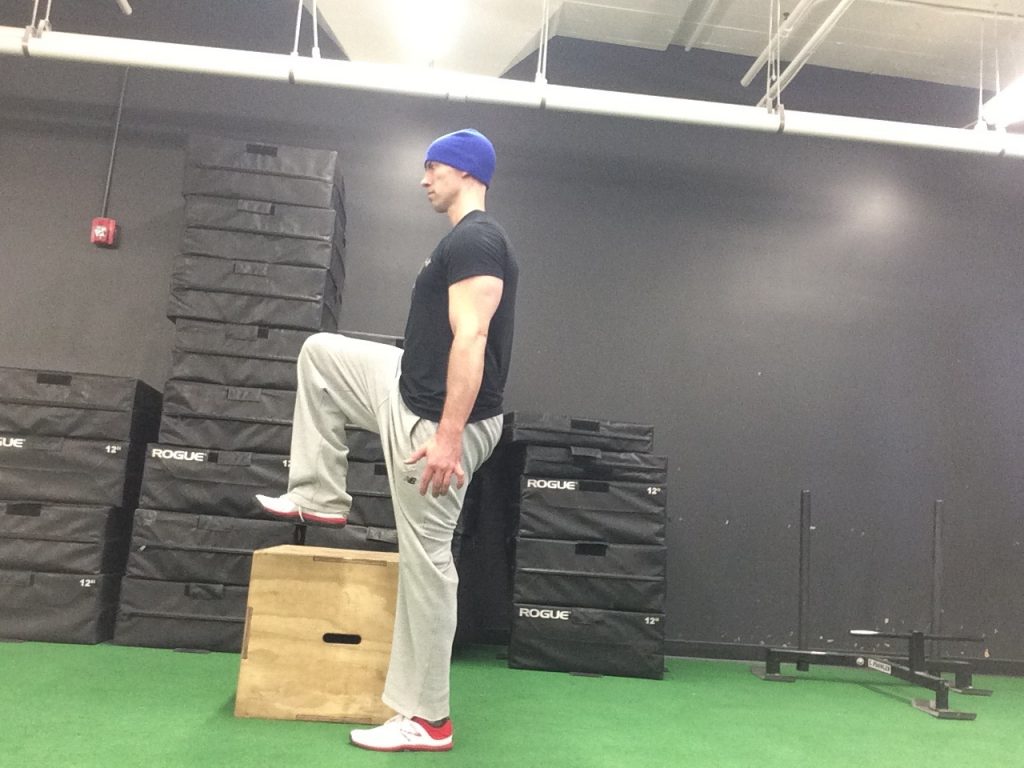Thump, thud, thump, thud.
“What’s that noise?” I thought to myself. “Thor whacking people’s faces with Mjolnir or a T-Rex break dancing to It Takes Two.”
I turn the corner….”please let it be a T-Rex. PLEASE!”
Nope, just some asshat performing box jumps.

Now, before anyone gets their panties in a tissy….I am not against box jumps. I implement them into my training as well as into the programs I write for other people and think believe they have a time and place (as does most any other exercise in existence[footnote]Except for Smith Machine BOSU Ball Squats. I saw a person perform these once and I was flummoxed. Attempting to add instability (BOSU ball) to an exercise that’s in a fixed plane of motion seems redundant. Unless I’m missing something?[/footnote]).
I mean, any strength coach or trainer worth his or her weight in paleo brownies understands their role in helping to train explosiveness and athleticism. And, if we were to peel back the onion a bit further, we’d note the REAL benefit(s) of box jumps are:
- Force summation, Rate of Force Development, or learning to put force into the ground.
- Landing mechanics: or, learning to absorb force.
It’s not to try to jump onto a box at the highest height possible or to perform them for endless repetitions.
Dumb
Really Dumb
Dumber
Commentary on Video #1
Before the record button was pressed you know those two guys were thinking to themselves “Dude, if you hit this jump it’s going viral and you’re totally going to get laid tonight.”
He’s lucky he didn’t break his back or neck.
Commentary on Video #2
Considering the number of banged up knees and scraped shins I’ve come across I really wish CrossFit would begin to understand that box jumps aren’t a great conditioning tool, and that there’s an abyss of better options.[footnote]I shouldn’t lump all CrossFit boxes under the same umbrella here. Many understand this and only box jumps sparingly. And when they do it’s for their intended purposes.[/footnote]
Hell, running over your right arm with a Honda Civic would be better than high-rep box jumps.
Commentary on Video #3
Yeah, yeah, I get it: It’s JJ Watt, it’s an old video, he’s an elite professional athlete, he nailed it, quit belly aching Tony.
Admittedly that was a baller jump and I too would have full confidence in JJ’s ability to jump over Mordor and then some. However, from a cost-benefit standpoint…..as a coach who’s worked with plenty of high-level athletes myself, I wouldn’t touch that with a ten-foot pole.
I have to wonder, though, did the coaches in that video prescribe or allow this to happen because they felt it would make their athlete better, or because they were chasing YouTube views and likes?
Not worth the risk. Refer to video #1.
My Real Beef: Not Box Jumps, But HIGH Box Jumps
A few months ago I watched a stellar video by Nick Tumminello where he went into detail on why he didn’t like HIGH box jumps, and he made a brilliant point I had never thought of before.
High box jumps reward those people with excellent hip mobility, particularly those with great hip flexion. Here’s an example:
The distance from the bottom of your foot to top of box is the “real” distance you’re jumping. Not so impressive now, huh?
And this is what the same jump looks like when someone doesn’t have the ability to clear ample hip motion:
They start cranking through their lumbar spine, over and over and over and…..”awwwww, goddamit I blew out my back again.”
“Ma, meatloaf! We want it.”
And speaking of the lumbar spine, how many times do you watch someone perform their box jumps and it ends up looking something like this:
Box Jump: Poor Landing
Happens all the time right?
Yuck.
If your box jumps look like this you’re using too high of a box and are reaping ZERO benefit from doing them.
How you start (chest up, knees slightly bent and not caving in, athletic position) is how you should end. Like this:
Box Jump – Good Landing
Another not so great thing thing many people end up doing is landing too loud on the box. Remember: one of the main benefits of the box jump is absorbing force.
Box Jump – Loud Landing
If someone can hear your box jumps in Idaho you’re doing them wrong.
Instead, you want to make sure you land softly, or what I like to tell my clients “like a ninja.”
Box Jump – Who’s the Ninja? You Are That’s Who
A Few Other Random Thoughts
- Even with a (seemingly) low box height, the idea is to cue your clients to jump as high as they can (and then to land soft). External cueing works wonders here:
- Try to hit your head on the ceiling.
- Jump away from the ground.
- OMG, there’s a snake!
- I like to program box jumps for low reps. Sets of 1-3 are ideal.
- Moreover I LOVE performing box jumps on lower body days prior to squatting or deadlifting as it serves as a nice way to potentiate or wake up the nervous system.
- Perform 3-4 sets of 1-3 reps and you’re good to go.
- Quality over quantity.




 Mike is a Boston area personal trainer and currently interning with Boston University Strength and Conditioning. Mike is also finishing his degree in Exercise and Health Science at the University of Massachusetts Boston. He loves bacon, beer and his 7 year old pit bull Lexi. You can reach him with any questions, comments or notes of affection at
Mike is a Boston area personal trainer and currently interning with Boston University Strength and Conditioning. Mike is also finishing his degree in Exercise and Health Science at the University of Massachusetts Boston. He loves bacon, beer and his 7 year old pit bull Lexi. You can reach him with any questions, comments or notes of affection at 

